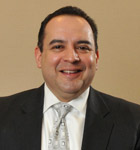When it comes to enchantment, Puerto Rico has a plentiful supply. White-sand beaches, rainforests, subterranean rivers, mountain ranges, and centuries-old colonial architecture are just some of the highlights that have long attracted visitors to its shores. But, as one of thousands of islands in the Caribbean, Puerto Rico has a sea of competition for sun-seeking tourists and their dollars, euros, yen, or pesos.

Nobody understands that better than Clarisa Jimenez. As president and CEO of the Puerto Rico Hotel & Tourism Association (PRHTA), she and her staff of eight work to ensure that the organization’s nearly 600 members have a collective and powerful voice in the legislature. In addition to its lobbying efforts, the PRHTA also offers networking and education opportunities to its members, and works with government tourism agencies to develop destination programs with wholesalers, travel websites, the groups and conventions markets, and more.
Like many of its counterparts in the United States, the PRHTA represents the private sector, but works cooperatively with government entities to get the word out for the benefit of all in the industry. “Our job here is to protect, promote, inform, and educate our members,” says Jimenez, a tourism industry veteran. “The competition for tourism dollars is very aggressive now because a lot of islands and companies have realized the potential positive impact on their bottom line.”
A native of Ponce, Jimenez launched her career at the Puerto Rico Tourism Company, the government agency in charge of everything tourism-related. That position took her to Los Angeles and then back to Puerto Rico, where she started her own company. She was an independent businesswoman for many years. Then, about seven years ago, one of the hoteliers told her that the San Juan-based PRHTA was looking for a new president and suggested she would be a good fit. “After all those years on my own, it looked like a good challenge,” Jimenez recalls. “I thought it would be a good opportunity and would give me a look at the other side of the industry.”
No doubt it has given her an eyeful. Tourism is a critical component of the Puerto Rican economy; every year, five million tourists visit the island, which has a population of about four million, spending nearly $2 billion. That’s particularly true in the capital, San Juan, which is home to the second-largest cruise port in the Western Hemisphere. It’s also home to more than 11,000 small and independent businesses, many of which provide tourism-related services.
The country’s biggest moneymaker, however, is manufacturing, which accounts for more than $44 billion annually. The economy depends on manufacturing to provide both revenue and employment. Indeed, many of the top global pharmaceutical and medical-device manufacturers, including Medtronic, Pfizer, Merck, AstraZeneca, and GlaxoSmithKline, have facilities on the island. The industry accounts for nearly 70 percent of exports and 22 percent of manufacturing employment. Close behind are agriculture, tourism, electronics, and chemicals.
Interestingly, more than 160 of the Fortune 500 companies have set up shop here. The country’s pro-business climate—tax incentives, a skilled and largely bilingual workforce, political stability, and world-class infrastructure —has been instrumental in attracting multinationals from around the United States and the world. An established business ecosystem, which includes everything from a full lineup of international banks, sophisticated logistics capabilities, key-technology suppliers, the US dollar as official currency, and no passport required for US citizens, has ensured their long-term presence.
And that’s good for the Puerto Rican economy, which had a few bumpy years during the recent recession. But, things are looking rosier. According to PRHTA’s Jimenez, in the past few years, hoteliers were forced to choose between occupancy or average daily rate (ADR); most wound up sacrificing ADR to get more heads in beds. Now, however, the island has seen an increase in both occupancy and ADR. “We can see a slight improvement in the numbers and are hopeful that this trend continues. This and the fact that we have a great destination, will help us to continue growing in the coming years,” she says. “PRHTA will continue to work hard and do whatever needs to be done to assure our members and our industry’s success.”
That bodes well for both employment and growth, to which tourism contributes substantially. As Jimenez points out, pharmaceuticals may be the biggest profit generator, but the tourism industry offers the largest opportunity for growth. That’s why the PRHTA is working to help craft legislation for the creation of a Destination Marketing Organization (DMO), an entity that would be responsible for marketing Puerto Rico, but would remain independent of the government. It’s a matter of continuity, according to Jimenez. Whenever there’s a change in the governor’s mansion or at the state-run tourism agency, there’s a chance that a current advertising campaign or marketing push will be scrapped for a new one. “We want to separate the marketing from politics to ensure continuity,” Jimenez says. “The economy is moving forward, we have new opportunities, and we want to be able to take advantage of them.”

